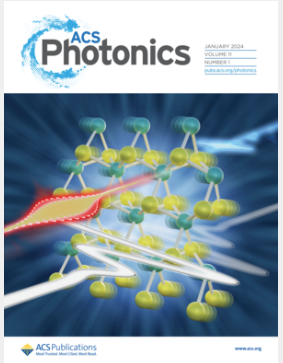Dynamics of Pulsed-Laser Interaction with Janus Particles
IF 6.5
1区 物理与天体物理
Q1 MATERIALS SCIENCE, MULTIDISCIPLINARY
引用次数: 0
Abstract
Janus particles, with their flexible chemistry and multifunctionality, have broadened the scope of the optical manipulation field as an emerging class of materials. Laser-based manipulation is particularly promising for half-metal-coated particles, offering a platform to study optical and thermal effects. However, the role of the laser’s operation regime in particle behavior needs to be understood better. Hence, in this work, we studied the interaction of nanosecond-pulsed lasers on 4.1 μm Au-Janus particles with a 100 nm gold cap. We focused on the interaction in three sections: (1) We observed three pulse energy influence regimes: In the low-influence regime (less than ∼10 nJ), the particle maintains its intrinsic Brownian motion. In the medium-influence regime (less than ∼40 nJ), the particle exhibits an extended range of motion. In the high-influence regime (higher than ∼40 nJ), the particle undergoes superdiffusion and establishes a new equilibrium position. (2) During optical manipulation trials, a threshold pulse energy of 4 nJ (average power of 40 μW) was sufficient to move Au-Janus particles against the laser spot. We achieved translation velocities of 0.9–5.1 μm/s at 4–50 nJ. (3) The gold cap is damaged at 20 nJ (fluence of 0.7 J/cm2) when the laser is focused on the particle, consistent with theoretical predictions, and the ablation process generates micro- and submicrometer gold particles. These findings reveal the potential of pulsed lasers for precise, power-efficient manipulation of Janus particles, advancing our understanding of laser–particle interactions and opening new pathways for optical manipulation applications.

求助全文
约1分钟内获得全文
求助全文
来源期刊

ACS Photonics
NANOSCIENCE & NANOTECHNOLOGY-MATERIALS SCIENCE, MULTIDISCIPLINARY
CiteScore
11.90
自引率
5.70%
发文量
438
审稿时长
2.3 months
期刊介绍:
Published as soon as accepted and summarized in monthly issues, ACS Photonics will publish Research Articles, Letters, Perspectives, and Reviews, to encompass the full scope of published research in this field.
 求助内容:
求助内容: 应助结果提醒方式:
应助结果提醒方式:


